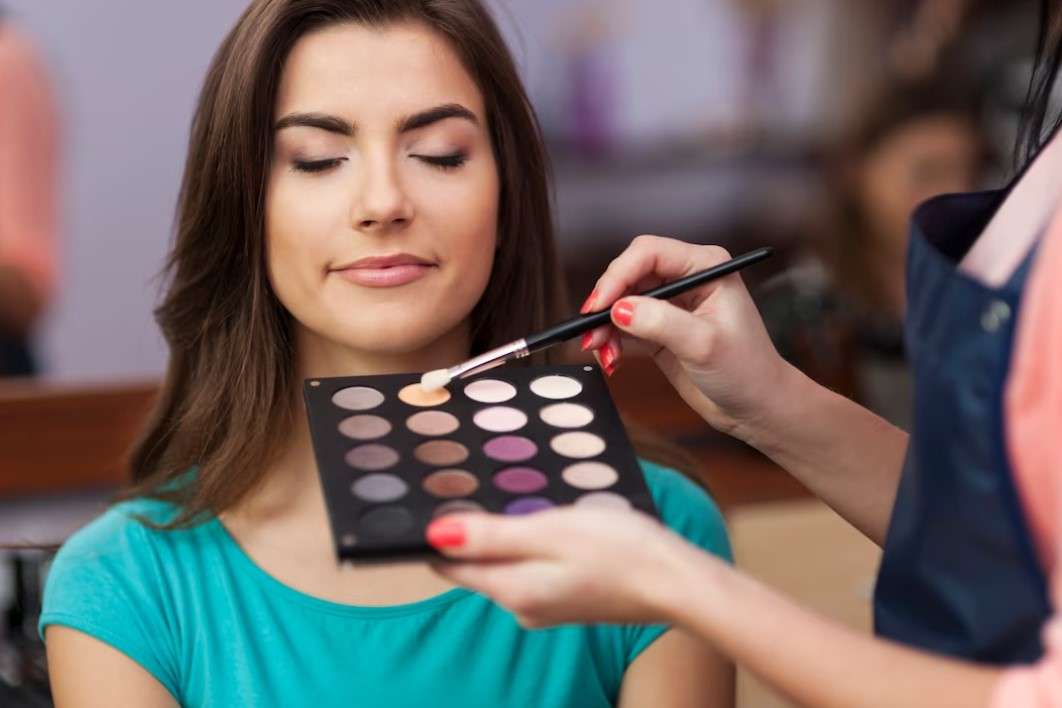Consider a career in makeup artistry if you want an exciting working environment and frequent chances for creativity. It’s vital to consider the advantages and disadvantages of the professional makeup artist course to decide if it’s the perfect one for you. Discovering more about the makeup artistry field can aid in your development of career-related abilities. In this post, we define the profession and list its upsides and downsides.
Why pursue a professional makeup artist course?
A licensed professional with training in hair, nails, and skincare is known as a makeup artist. Clients may be offered simple haircuts, makeup looks, pedicures, or more involved demands like hair coloring, visual effects makeup, or acrylic nail art painting. The majority of makeup artists work in salons, where they may lease space and set up their stations with the necessary equipment and supplies for the services they provide. Some experts decide to start their private practices and may take on more managerial responsibilities.
Major benefits of working as a makeup artist
8 benefits of being a makeup artist are as follows:
1. The workplace
Makeup artists frequently work in salons, which frequently have open-floor layouts that provide a fantastic social environment. A makeup artist may converse and make acquaintances with both employees and clients throughout a typical workday. These contacts can help makeup artists network within their profession, which can help them by opening up career chances and keeping them up to date on cutting-edge tools and methods.
2. Exciting work life
Every day, makeup artistry professionals interact with a range of clients, which can help them stay motivated and promote job satisfaction. This implies that they can continually challenge their makeup artistry talents, which may inspire creativity. Makeup artists frequently have access to a large range of goods at salons that they can use to produce distinctive styles and designs, thus these professionals frequently have the tools they need to practice and develop their abilities regularly.
3. Employment prospects
From 2020 to 2030, the statistics predict that the employment rate for makeup artists will rise by 19%. The 8% pace for other jobs is substantially slower than this. This can be a result of population growth, which might increase demand for advanced hair care treatments like hair coloring. Makeup artistry by doing a professional makeup artist course can be a steady career path because companies that offer services are often less impacted by economic fluctuations than those that sell things.
4. Open-ended timeline
It’s common for makeup artists to work flexible hours. This is because they can choose their hours as they frequently rent the salon space they work in. To better balance their job and personal lives, they may decide to work outside of the standard 9 to 5 schedule or during it.
5. A chance for entrepreneurship
Many makeup artists join independent salons since the industry encourages entrepreneurship. Following the development of a devoted clientele that might follow them to their new site, makeup artists can assume a more commanding position. This also enables the salon owner to concentrate on managerial and administrative tasks rather than direct client interactions.
6. Educational approach
You can register in a makeup artistry program at a trade school rather than a four-year college or university. These courses often give vocational degrees that may be used to meet licensing requirements.
Students at these colleges receive hands-on training in their profession, acquiring cosmetics, hair, and nail care skills that they may apply in the salon. In two years, you can normally obtain an associate’s degree in makeup artistry or a closely related specialty.
7. Compensation
A makeup artist’s annual salary is around $50,000. Depending on the salon you work at, where you live, and your level of experience, your pay may change. You can extend your hours and even raise your income by building a network of loyal customers.
8. Commission and tip payments
Makeup artists have other income options than their base pay, including commissions and tips. For services like haircuts and manicures, clients frequently leave gratuities, and the amount of the tip can depend on how much the client likes the finished product. In addition, makeup artists may receive a commission for effectively bringing in new customers for their goods and services. Even though not all salons pay commission, looking for a job where they do might give you extra money and product knowledge.
Many makeup artists build clientele lists while doing a professional makeup artist course, which can help them create lasting ties with customers and guarantee frequent recurrence. As a result, makeup artists may be able to make more than the industry standard wage and may see an increase in tips. Professionals with a sizable clientele of repeat customers may also establish private salons or individual practices, which may have an impact on their annual salary.
Downsides of being a makeup artist
Consider these three downsides of being a makeup artist:
1. Physical exertion
Makeup artists may stand in various positions and circle customers for a significant portion of their workday. Additionally, the profession necessitates continual use of the hands and fingers to precisely control instruments. These professionals may engage in regular exercise and unwinding treatments after or before working hours to lessen the impacts of this type of physically demanding work.
2. Chemical contact
The work of a makeup artist naturally involves using cosmetics and hair products, which may contain chemicals. Many of these products are safe to use on occasion, but frequent inhalation or skin application could be harmful to your health. You can reduce your exposure to chemicals by regularly washing your hands and wearing face protectors while using hair spray or colour to reduce health and safety risks at work.
3. The need for licenses
It may take two years to complete an associate’s degree in a professional makeup artist course or a related field. Although it could be quicker than other types of higher education, makeup artists must still obtain a professional license. This license is often made available upon graduation from a one- or two-year internship.
Before a professional may be licensed, they must complete a specific number of hours, which varies by state. 500 to 1,500 hours of practice may be necessary. To fulfill this requirement, you can frequently combine any practicum hours you accrue while enrolled in makeup artistry school with internship hours.
Now that you have gone through the highs and lows of pursuing a makeup artist career, this is your time to decide to find a credible makeup school like the Key West Academy, to begin with all things makeup. Enroll today.










